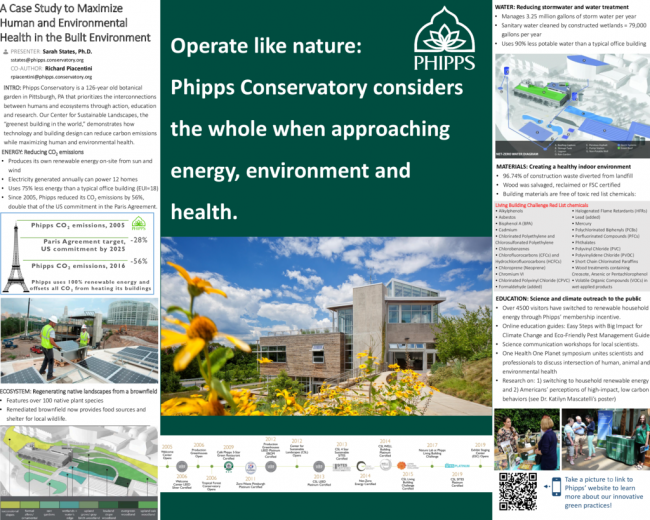As climate change risks and global human population grow, we need to design sustainable buildings that are closely tied to nature to reduce carbon emissions while simultaneously improving health outcomes. Phipps Conservatory and Botanical Gardens views humans and ecosystems as inextricably connected, rather than separate, and demonstrates how technology and building design can maximize both human and environmental health. Phipps will soon have three Living Building Challenge-certified buildings, with an educational framework that demonstrates best practices for human, building, and environmental health. The Center for Sustainable Landscapes is one of “the greenest buildings in the world,” achieving five building certifications at the highest level: 1) Living Building Challenge (LBC), 2) U.S. Green Building Council LEED Platinum, 3) Net-Zero Energy, 4) SITES Platinum, and 5) WELL Platinum certification. We will describe how we have systematically reduced our carbon footprint across our operations and disseminate this work to the public. Our educational programs, inspired by Project Drawdown, incentivize visitors to switch their households to renewable energy, provide other individual low-carbon behaviors to adopt, and demonstrate how our households and workplaces can achieve the highest level of sustainability. Phipps recognizes the increasing need to connect scientists with the public, and offers Ph.D. fellowships, science communication training and outreach opportunities for scientists to share their work with the public. Phipps leads by example and challenges everyone to move beyond being sustainable to living regeneratively, which will enrich human health and protect and restore our environment.
Day
Tuesday Poster Session
Related Conference Themes
Built Environment
Electricity Generation
Materials & Waste


